| Having trouble viewing this email? Click here . |
|
|
Auckland’s recovery – community update
|
|

Auckland’s Long-term Plan consultation includes flood resilience programme options and trade-offsAuckland Council’s Long-term Plan (LTP) 2024-2034 has opened for public consultation, giving Aucklanders the chance to have their say on the options and trade-offs that will influence region-wide activities, services and investment. The LTP proposal aims to strengthen Auckland’s physical and financial resilience, while tackling big budget challenges. You can view the plan and have your say at akhaveyoursay.nz/ourplan.
Auckland Council chief executive Phil Wilson says this year’s LTP takes a new approach compared to previous years, by presenting multiple options for consultation – a central proposal and options to do more or do less.
“We all want a better Auckland – a thriving, beautiful city that has recovered from the floods and is more resilient in future,” says Phil.
The LTP’s central proposal includes strengthening Auckland’s resilience to flooding with the new Making Space for Water Programme of more than $1 billion of investment (including government co-funding). Along with the central proposal, the LTP includes options and trade-offs – two additional scenarios to pay more, get more or to pay less, get less.
The ‘pay more, get more’ scenario includes accelerating the Making Space for Water programme for delivery within six years, if possible, rather than to deliver within 10 years as under the central proposal. Under the ‘pay less, get less’ scenario there would be reduced investment in the Making Space for Water programme. This would mean the council would focus on maintenance works only, providing less resilience against flooding and not taking full advantage of the government’s $380 million co-funding.
|
|
|
|
|

|
|
As part of the council’s Making Space for Water programme, we have identified potential areas around the region that could benefit the most from blue-green networks. But what is a blue-green network? If you’d like to understand more, check out the explainer video on the Auckland Council website.
|
|
|
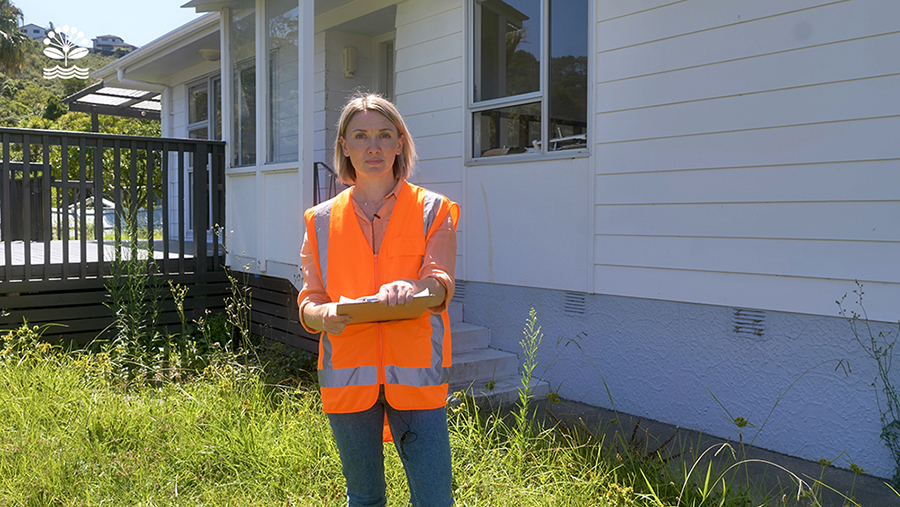
|
Step-by-step guide to a flood risk assessmentAre you wondering what a flood assessor does when they come for a site visit, or why getting a category for your flood-affected property takes time?
Watch our short video series to have one of our assessors guide you through the risk assessment process step-by-step.
|
|
|
Questions of the weekI’m still waiting for my category, but I’ve decided to sell my home. What should I tell buyers?
When preparing to sell your home it’s important to share information that potential buyers will need to make an informed decision. You will need to seek your own legal advice about disclosure obligations for your property sale.
When did the council change from a ‘1/100 flood risk’ model to a ‘1 in 100 chance per year’ model and why?
The council hasn’t changed the flood risk model itself, but we’re changing the way we communicate it. This is because homeowners can mistakenly think that ‘1 in 100’ means that you will experience one storm in 100 years. In fact, it means that there’s a one in 100 chance of a flood of this size occurring or being exceeded each year.
The flood plains and flood prone areas shown on Flood Viewer have a 1% chance of occurring or being exceeded each year – and some areas flood more frequently depending on their location. We calculate this using the Annual Exceedance Probability Method, accounting for climate change and future development for most of the region.
For more information about our data, click on the FAQs button next to the ‘Guide’ button on Flood Viewer.
|
|
|
|
|
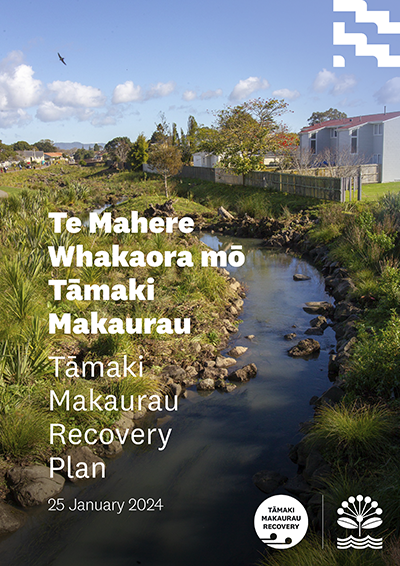
Tāmaki Makaurau Recovery Plan: What’s our commitment to recovery?Following last year’s emergency response, the council and the Government have developed rapid solutions and made significant investments to support impacted communities, and to get the region’s infrastructure back on track.
While the scale, complexity, and challenge of recovery are considerable, there is an opportunity for mana whenua, communities and residents to recover in a way that acknowledges the future changes and challenges our region will face.
Auckland Council is committed to supporting communities to recover and to chart a course for their futures, so they are more resilient and prepared than ever before.
We know that this will take time and effort, and that we need to start to build that future in communities where time, effort and resources are running thin.
While the storm events affected communities across Tāmaki Makaurau, the impacts are not felt the same everywhere, and they are likely to further entrench the experience of disadvantage for some communities.
As part of our community and social recovery mahi we have identified neighbourhoods that require more investment and resources to recover well and provided targeted support. For example we have established community convenor roles and distributed community grants for those community groups/organisations supporting impacted residents and communities in these areas.
To learn more about how we are supporting communities to recover, view or download the Tāmaki Makaurau Recovery Plan online.
|
|
|
Property categories will not determine hazard noticesSome affected home owners have asked if receiving a risk category means that when they apply for a building consent, the property will automatically get a Section 74 notice under the Building Act.
The categorisation process is not related to council’s natural hazard notice obligations under the Building Act. A property’s category will not determine whether a notice is necessary, but any future building work you do may trigger a natural hazards notice.
If you are concerned about getting a Section 74 notice, talk to your designer and/or your engineer when planning your building work. Architects and engineers have access to the same information as council, and can explain how your design may impact any hazards on your property.
|
|
|
|
|

|
Maintaining our local streamsWhile Auckland Council is tasked with maintaining streams in the public network – such as parks – homeowners who have streams running through or next to their properties also have a responsibility to ensure the water flows.
To understand more about your responsibility as a private landowner, including where you can go to for help (or how you can help others), read the full story on OurAuckland.
|
|
|
|
|
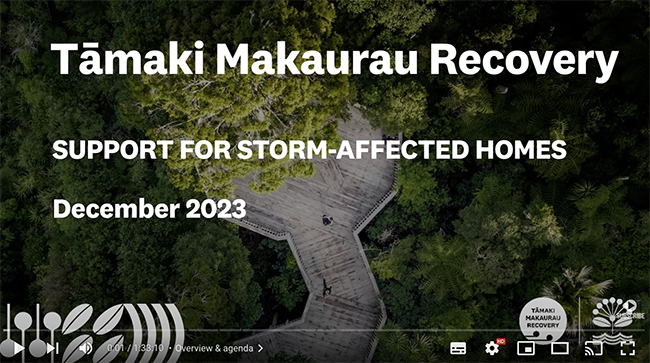
|
New to this newsletter?If you’re new to this newsletter, there’s a few things you can do to get up to speed on property categorisations, buy-outs, placards and more.
|
|
|
|
|

|
AT update
Marine Parade (Mellons Bay)
Repairs to Marine Parade in Howick are now complete, after Cyclone Gabrille caused significant slip damage to the popular route (as pictured above).
Ahuroa Road
The complex repair of Ahuroa Road near Pūhoi is taking shape, with 73 of the 150 piles – some up to 17 metres deep – and 80 soil nails in place.
Read more information about these projects, including additional images, on OurAuckland.
|
|
|
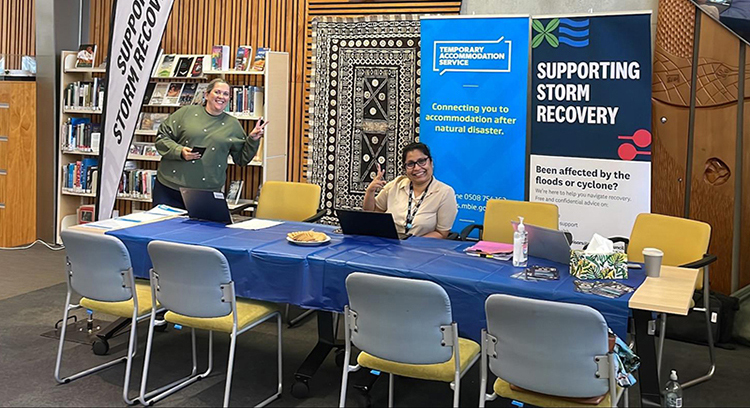
|
Need support?Various social and wellbeing support is available to people affected by the 2023 severe weather events. This includes free help with processing home insurance claims, rates relief, and identifying other services you may be eligible for, such as temporary accommodation assistance, and other financial and mental health support.
Find out what support is available on OurAuckland.
Navigator drop-ins
We have upcoming navigator drop-in events in Epsom, Māngere, Mt Roskill, Northcote and Browns Bay where you can speak face-to-face with our navigators.
|
|
|
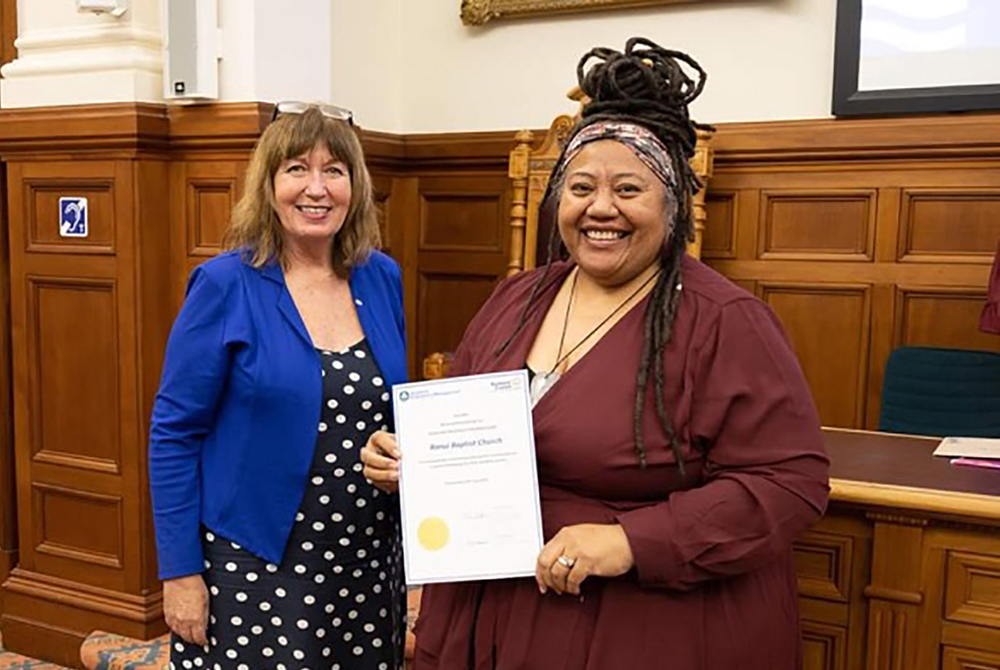
|
Leading the way for volunteer emergency responseAuckland Emergency Management recently gave an award to a community organisation for recognising the outstanding work of volunteers who made a difference to the welfare and safety of more than 2000 people in west Auckland, Napier, and Hastings during severe flooding in 2023.
Ranui Baptist Community Care (RBCC) was the award recipient, and RBCC manager Elesha Thomas remembers 27 January 2023, as the day her community became ‘trapped underwater’.
“We were the first facility in west Auckland to open its doors, even before Civil Defence. We provided a haven for people searching for shelter, a safe space to dry out, get kai, clothes, bedding and a mattress to sleep,” says Ms Thomas.
Photo (from left): Councillor Sharon Stewart, chair of Auckland Council’s Civil Defence and Emergency Management Committee, gave an award to Flood Co-ordinator Leao Tildsley to recognise the work of the volunteer team at Ranui Baptist Community Care during the early 2023 flooding events.
|
|
|
|
|
Free workshop: Business continuity in emergencies for farmersNorthland Civil Defence Emergency Management will be running an emergency preparedness and business continuity workshop for farmers in Wellsford on Wednesday 6 March.
The workshop will cover:
- how to prepare an emergency plan for your house and property
- how to plan for animal welfare before emergencies
- tips for working with insurers
- backup energy systems to keep the power on
- plus more.
The workshop is free to attend and lunch will be provided. For more information or to register, visit the Northland Inc website.
|
|
|

|
|
Know someone who might need this newsletter? Forward this email to them and get them to sign up.
|
|

